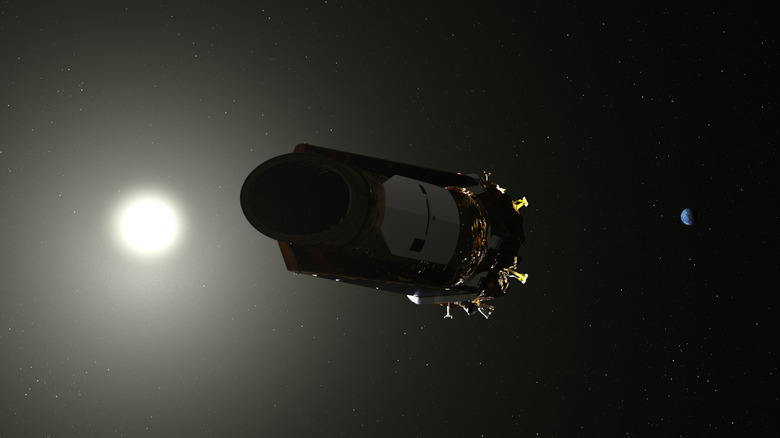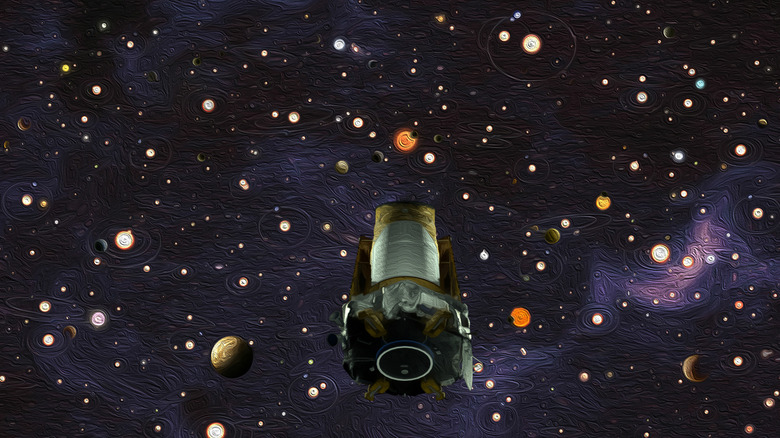Whatever Happened To The Kepler Space Telescope?
If you've ever read about exoplanets — that is, planets outside our solar system — you've likely come across a particular name: Kepler. You'll find exoplanets with names like Kepler-452b or Kepler-4b, and many, many more besides. These are named after the NASA telescope used to discover them, the Kepler Space Telescope, which was retired in 2018. Even so, this single telescope continues to have a huge impact on the science of exoplanets and how we think about planets beyond the solar system.
Kepler was launched in 2009 when exoplanet research was still a budding topic, unlike the major focus it is today. The idea was to have a telescope in orbit that could look specifically for exoplanets and try to learn about these distant worlds. That was an ambitious goal, but the mission more than succeeded, as the telescope discovered an astonishing 2,600 exoplanets over its 11-year mission (via NASA).
There were problems along the way, such as when the telescope experienced mechanical failures four years into the mission and engineers had to come up with a workaround. But they managed to do so, and the spacecraft continued in a second phase mission called K2.
"When we started conceiving this mission 35 years ago we didn't know of a single planet outside our solar system," said the Kepler mission's founding principal investigator, William Borucki, now retired from NASA's Ames Research Center in California's Silicon Valley, when the telescope was retired in 2018. "Now that we know planets are everywhere, Kepler has set us on a new course that's full of promise for future generations to explore our galaxy."
A legacy of exoplanets
Eventually, Kepler ran out of fuel and went dark, although researchers continued to push to collect data until the last possible minute. Unlike the dramatic burning up in the atmosphere of missions like Cassini, Kepler wasn't destroyed in fire. Instead, its decommissioning involved shutting down its systems and leaving it to float as an inert block in space (via space.com).
One remarkable thing about Kepler is that even after the telescope was retired, it still offered a treasure trove of information to the astronomical community. Data collected on thousands of exoplanets over Kepler's mission is now publicly available at the Barbara A. Mikulski Archive for Space Telescopes. This data continues to be used in astronomical discoveries to this day, with its data used in estimates that, for example, there may be up to six billion Earth-like planets in our galaxy (via SciTechDaily). Many of the researchers who worked with Kepler have continued to work in astronomy and science communication.
Overall, even though it is now gone, the Kepler mission was a huge success that set the stage for the study of exoplanets that blossoms today.
"As NASA's first planet-hunting mission, Kepler has wildly exceeded all our expectations and paved the way for our exploration and search for life in the solar system and beyond," NASA's Science Mission Directorate associate administrator Thomas Zurbuchen said when the mission was retired. "Not only did it show us how many planets could be out there, it sparked an entirely new and robust field of research that has taken the science community by storm. Its discoveries have shed a new light on our place in the universe, and illuminated the tantalizing mysteries and possibilities among the stars."

